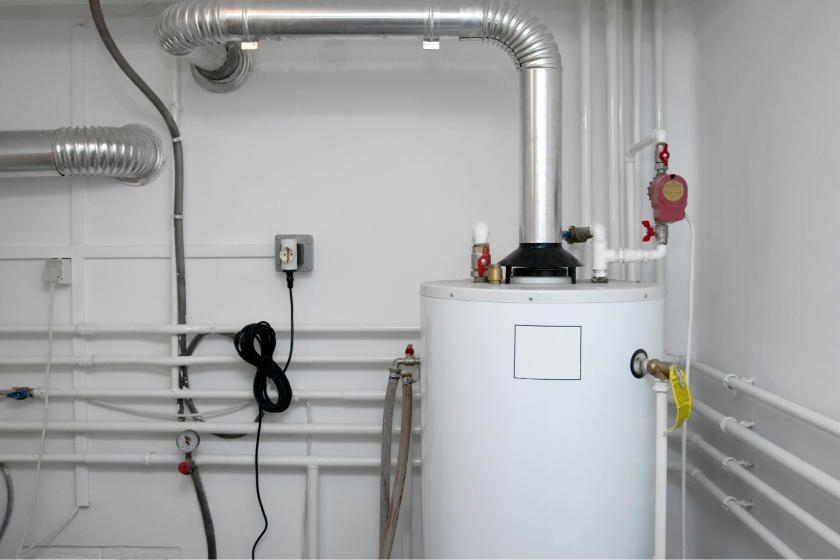Almost everyone will have their own unique thinking on the subject of How to Maintain Your Water Heater & Prolong its Life.

Hot water is crucial for daily convenience, whether it's for a rejuvenating shower or washing recipes. To ensure your warm water system runs efficiently and lasts longer, routine upkeep is essential. This write-up offers sensible suggestions and understandings on just how to preserve your home's warm water system to avoid interruptions and costly repair services.
Intro
Preserving your home's warm water system might seem overwhelming, but with a few straightforward steps, you can ensure it operates efficiently for years to find. This overview covers every little thing from comprehending your warm water system to DIY maintenance ideas and recognizing when to hire expert aid.
Importance of Keeping Your Warm Water System
Regular maintenance not just expands the lifespan of your hot water system however also guarantees it operates effectively. Disregarding maintenance can result in reduced efficiency, greater energy bills, and even premature failure of the system.
Indications Your Hot Water System Requirements Upkeep
Recognizing when your warm water system requires attention can avoid major concerns. Look out for signs such as inconsistent water temperature, unusual noises from the heating unit, or rusty water.
Understanding Your Hot Water System
Before diving into maintenance jobs, it's useful to recognize the fundamental elements of your hot water system. Normally, this consists of the hot water heater itself, pipelines, anode poles, and temperature level controls.
Regular Monthly Maintenance Tasks
Regular monthly checks can help catch small problems before they escalate.
Flushing the Hot Water Heater
Purging your hot water heater gets rid of debris build-up, boosting effectiveness and extending its life.
Checking and Replacing Anode Rods
Anode rods avoid rust inside the storage tank. Examining and replacing them when worn out is crucial.
Inspecting and Readjusting Temperature Level Setups
Changing the temperature settings makes certain ideal performance and safety.
DIY Tips for Upkeep
You can do a number of maintenance jobs yourself to maintain your warm water system in leading problem.
Checking for Leakages
On a regular basis examine pipes and links for leaks, as these can cause water damage and greater expenses.
Testing Stress Relief Valves
Examining the stress relief valve ensures it works properly and avoids too much pressure accumulation.
Shielding Pipelines
Protecting hot water pipelines decreases heat loss and can conserve power.
When to Call an Expert
While DIY maintenance is useful, some issues call for professional experience.
Complicated Concerns Needing Specialist Assistance
Instances include significant leakages, electrical issues, or if your water heater is constantly underperforming.
Routine Expert Upkeep Advantages
Specialist maintenance can consist of thorough assessments, tune-ups, and ensuring conformity with safety and security requirements.
Conclusion
Normal maintenance of your home's warm water system is essential for performance, longevity, and expense financial savings. By adhering to these suggestions and knowing when to seek specialist aid, you can guarantee a trustworthy supply of warm water without unexpected disruptions.
How to Maintain an Instant Hot Water Heater
Before tinkering with your hot water heater, make sure that it’s not powered on. You also have to turn off the main circuit breaker and shut off the main gas line to prevent accidents. Also turn off the water valves connected to your unit to prevent water from flowing into and out of the appliance. 2. When you’re done, you have to detach the purge valves’ caps. These look like the letter “T” and are situated on either side of the water valves. Doing so will release any pressure that has accumulated inside the valves while at the same time avoid hot water from shooting out and burning your skin. 3. When the purge valves’ caps are removed, you have to connect your hosing lines to the valves. Your unit should have come with three hoses but if it didn’t, you can purchase these things from any hardware or home repair shops. You can also get them from retail stores that sell water heating systems. Read the user’s manual and follow it to complete this task properly. When the hosing lines are connected, open the purge port’s valves. 4. You should never use harsh chemical cleaners or solutions when cleaning your unit. Make use of white vinegar instead. It should be undiluted and you’ll probably use about 2 gallons. 5. Now flush your water heater. This task should probably take about 40 minutes. We can’t give you specific directions for this because the procedure is carried out depending on the type, model and brand of your heater. With that being said, refer to the user’s manual. 6. When you’re done draining the unit, you have to turn off the purge port valves again. Remove the hosing lines that you earlier installed on each of the water valves. Put the valve caps (purge port) back in their respective places and be very careful so as not to damage the rubber discs that are found inside these caps. 7. Now that everything’s back in place, check your user’s manual again to find out how to reactivate your water heating system. 8. Once it is working, turn one of your hot water faucets on just to let air pass through the heater’s water supply pipes. Leave the tap on until water flows smoothly out of it. https://www.orrplumbing.com/blog/2014/september/how-to-maintain-an-instant-hot-water-heater/

Hopefully you liked our piece on Tips For Maintaining Your Hot Water Heater. Thank you so much for taking the time to read our short article. Are you aware of another individual who is fascinated about the niche? Take a moment to share it. Kudos for your time. Don't hesitate to check our website back soon.
Book Today!